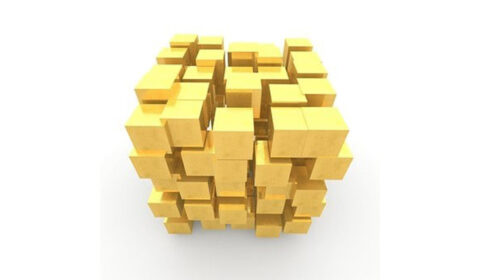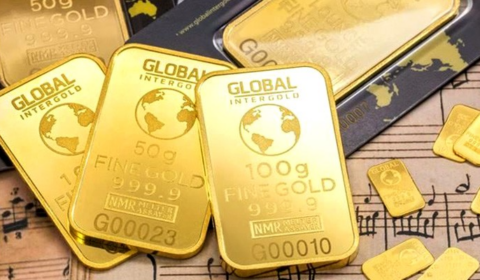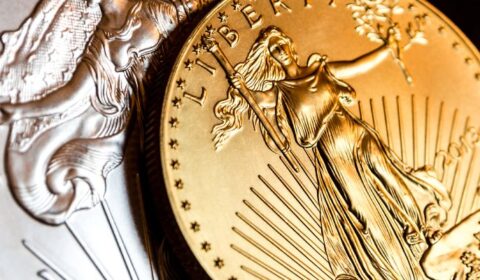A Properly Diversified Portfolio Includes Precious Metals

The following article is created by Orion Metal Exchange for the benefit of our investors and perspective investors alike. We seek to provide relevant content concerning precious metals and the impact caused by the economy and geopolitical trends that will most likely place impact on your financial future. If you are interested in learning about precious metal investing, call 1-800-559-0088, for a FREE investor kit.
Every investor should have a properly diversified portfolio. No one can be expected to know the future. Proper diversification can help stabilize and protect a portfolio from unforeseen and volatile market conditions. Precious metal coins are a key ingredient to maintaining a properly diversified portfolio and investors can utilize a precious metals IRA or invest in gold or silver for home delivery.
Portfolio insurance
Most precious metal products, such as gold and silver coins can be utilized as a hedge against geo-political uncertainty. Gold and silver are used as investment vehicles to protect against fiat currencies and arbitrary government policies.
Precious metals have a comparatively low or negative correlation when compared to stocks and paper assets. When the values of other assets decrease, precious metals will likely rise in value and promote portfolio balance and stability.
Precious metals are not prone to mismanagement or mishandling by corporations or government entities. Precious metals are not subject to government policy changes. For example, when you own a gold Eagle coin, no one can borrow or loan against your gold coin. Physical precious metals are free from the risk associated with debt.
A requirement to proper diversification
If you do not own physical precious metals, you must first purchase a core position in precious metals to be properly diversified. Once you own a core position in physical precious metals, look to strengthen your precious metal holdings on a value basis. Remember, buy low and sell high. Gold, silver, platinum, and palladium do not move in lockstep with each other. They can fluctuate independently in value, and based on market conditions, one may offer a better value and more upside potential than another.
The percentage of physical precious metals you own should be based on the current market trends and your personal financial goals.
Precious metal supply and demand factors:
Gold and Silver
You’ve probably heard of Gold and Silver, they are commonly used in jewelry, electronics, solar energy applications, and for investment purposes as store-of-value. Their historical significance as currency has made them popular choices for investment purposes. Investors often monitor the markets and currency conditions to determine what percentage of Gold and Silver should be held in their portfolio. It’s important to state that all investors should be adequately diversified, and Gold and Silver are critical ingredients to a well-balanced portfolio.
South Africa, the United States, China, and Australia are the primary sources of Gold, while Peru, Mexico, Chile, and China are the primary producers of Silver. Gold and Silver are not only valued for their rarity but also for their various applications. Silver, for instance, is used in manufacturing bullion coins, cell phones, cameras, computers, solar panels, water filtration systems, and jewelry.
Understanding Gold and Silver’s primary sources and applications can help you better appreciate their importance in investing in precious metals.
Platinum and Palladium
Platinum and Palladium are members of the platinum group of metals. Which are rarer than Gold and Silver. While platinum and palladium coins hold legal tender status, they are also used in industrial and technological applications. South Africa, Canada, and Russia are the leading metals producers. They have various uses, from catalytic converters in the automotive sector to hydrogen fuel cell technology, dentistry, cancer treatment, and jewelry. They play an essential role in the defense and aerospace industries. Though not as well-known as Gold and Silver, these metals still hold investment value due to their rarity and unique properties. Monitoring platinum and palladium prices can benefit investors interested in diversifying their portfolios.
Palladium serves various practical purposes, including its use in “white gold” jewelry, catalytic converters, and electrode plating in electronics. Platinum, on the other hand, is essential in the petroleum and refining sectors and the computer industry. By understanding Platinum and Palladium’s industrial uses and market dynamics, investors can make more informed decisions when diversifying their precious metal investments. Platinum and Palladium have offered investors great returns when purchased at an undervalued level.
FAQ: Your Key to Understanding!
What is the most widely traded precious metal?
Gold is the most widely traded precious metal in comparison to silver, platinum, and palladium. Its historical significance as a store of value, and perceived stability when geoeconomic uncertainty is in play, make it a sought-after asset for investment and wealth preservation purposes globally. Many investors view gold as the best hedge against inflation.
Which precious metal has commanded the highest value?
When comparing historical performance in gold, silver, platinum, and palladium, the precious metal that has commanded the highest value is palladium. In 2022, palladium reached an all-time high of over $3,300 per oz. Palladium is also rarer than gold, silver, and platinum.
Orion Metal Exchange presents this article for both our investors and perspective investors, offering insights into precious metals and their relevance amidst economic and geopolitical trends. To explore precious metal investing further, dial 1-800-559-0088 for a FREE investor kit.






